Did you know you can get the Sprott Money Weekly Wrap Ups, Ask The Expert,
special promotions and insightful blog posts sent right to your inbox?
Sign up to the Sprott Money Newsletter here.
When it comes to markets, focusing too much on the day-to-day or weekly minutia can unsettle even the most hardened investor. This week, host Craig Hemke sits down with market strategist Paul Wong of Sprott, Inc. to break down all the gold and silver news you need to keep your eye on the big picture.
In this edition of The Weekly Wrap Up, you’ll hear:
- The latest on the commodities surge
- Is inflation “transitory”?
- Plus: What to expect from next week’s FOMC meeting
“I guess there are four factors that are driving gold, supporting gold, and are likely to push it higher into the future. U.S. dollar, real rates, M2 growth, and as you mentioned, inflation. So, we’ll just touch a bit on inflation. So, right now, inflation is running hotter than expected. The numbers came in higher than expected. The month-over-month increases are still eye-catching. This month it was 0.7. April was 0.9. And those are probably two of the highest back-to-back months in thirty years, maybe…”
To hear Paul’s full thoughts on this week’s gold and silver news, listen here:
Man: You're listening to the Weekly Wrap-Up on Sprott Money News.
Craig: Welcome back to the Sprott Money News at sprottmoney.com Weekly Wrap-Up. It's Friday, June the 11th, 2021. I'm your host, Craig Hemke. Joining us this week is a return visit from Paul Wong. Paul is a market strategist at Sprott Inc. So we're going to get into some of the kind of the big picture stuff today. And that's very important because I know a lot of this minuté day-to-day stuff can really shake you off if you watch it too closely. We got to keep our eye on the big picture. And that's what Paul does. Paul, thank you so much for your time.
Paul: Thank you, Craig.
Craig: Hey, before we get started, I like to do this every week because there's all this great content that Sprott Money puts out, whether it's these Weekly Wrap-Ups, the monthly projections with Chris Vermeulen in the Ask the Expert segment, all of that, other great writers that post information at Sprott Money. Look, throw us a bone, throw them a bone, you know. They do put this out there for you, so be sure to visit sprottmoney.com. And with summer right around the corner, why not treat yourself during the Sprott Money Spring into Summer Sale? Hey, how about that?
I know it's summer where I live, and Paul was just telling me it's summer where he lives too. From June 7th through June 28th and while quantities last, you can take advantage of some great summer prices. Check out the featured products at sprottmoney.com, and you can buy them directly online. But if you want to talk to a human being, maybe kind of go over things in more detail, maybe try to find an option as to where you store your precious metal. You can always just pick up the phone, give Sprott Money a call, 888-861-0775.
Sprott Inc. though is where the investment action happens. And Paul, as a market strategist, is all over that. You can find his work at the Sprott website. He's got a great monthly highlights letter that he puts out. The most recent one, Paul, you talked about Strong Tailwinds for the Precious Metals yesterday, some pretty extraordinary CPI data. I mean, even the Waterdown CPI, Paul, jeez Louise, are now 5% annualized. About those tailwinds, how has that picture changed even in just the last few days?
Paul: Well, Craig, yes. So my monthly commentary, I guess there's these four factors that are, you know, driving gold, supporting gold, and likely to push it, you know, higher into the future: U.S. dollar, real rates, M2 growth, and as you mentioned, inflation. So we'll just touch a bit on inflation. So right now inflation is running hotter than expected, so the numbers came in a little bit higher than expected. The month-over-month increases, it's eye-catching still. This month it was 0.7, April was 0.9. And those are probably 2 of the highest back-to-back months probably in about 30 years maybe. I guess why it stands out is, okay, if you go year over year, okay, you get the big base effects.
So a year ago, you know, pretty much U.S. economy was shut down. Everything was pretty much ground down to a halt. So this year versus last year, all numbers are gonna look extraordinarily good. But the month-over-month, you know, you shouldn't have any of that kind of base effect because you're just looking, you know, April over March, March over February, and those numbers are quite high. And I guess is it simply just, okay, the economy restarting all at once, huge supply-demand bottlenecks that need to be reconciled and everything comes back down, or is this something more sustainable going forward? And that's the problem.
If you look at the long history of forecasting inflation, it's really poor, whether you're talking about market participants, economists. It doesn't matter. If you look at any forward expectations, numbers, and then you take it and you look at what inflation actually realized, the numbers to be blunt are terrible. The numbers are all over the map. So you have a data series that's incredibly important to the market, has huge implications for valuations, you know, P multiples, discount rates, etc., but at the same time, you have a really difficult time trying to forecast that. And then you throw in the effects of COVID on top of that. So what normally is exceptionally hard to forecast becomes even more difficult. So that's the problem.
The problem you have now is that, "Okay, what if I'm right? What if I'm wrong?" Okay, the fed says it's transitory, and I think the consensus in most of the comments you read is, "Okay, it's transitory." I guess the first question you have to ask yourself is, "Hey, what does even transitory mean? Are we talking once a quarter, a year, maybe more?" Because, you know, okay, inflation itself may be transitory, but the capital market reaction may not be transitory. And that's part of a bigger story that I tried to touch on in the article.
So for the last 10 years or so decade, you'd been sort of in this...I call the Goldilocks low-inflation-type world, very modest growth, very little inflation. And so it's been going off for a number of years. And, again, I wrote in the article how, you know, all these different funds, strategies, you know, they latch on to this overriding macro theme. And over the years, they amplify it, they put bigger positions on, they leverage it up, etc., etc. And so now we reach the point now where, okay, well, maybe that may not work. Maybe it's changing. Maybe we're going through this regime change like for the last 10 years. Everything that we thought, you know, the market was going to do all of a sudden gets turned on its head. And the market goes through these macro changes, seems like every 10 years. So, you know, 10 years ago, this time, back in 2011, the big overriding investment theme for that, you know, prior decade was, you know, the China-led commodity boom. And it was fantastic. That was, you know, probably some of the greatest commodity markets ever, you know. From what I can tell, like a very limited data, but it's probably the best since the 1950s post-World War II reconstruction.
Before that, at the end of 2000, you had the technology boom. So thanks to '90s, the big technology wave, birth of the internet, technology-driven productivity gains, that was the major cause of the big multiple expansions on the marketplace, and that in a spectacular manner, you know, with the big technology crash. But, you know, again, every 10 years, you go through these big macro changes. At the beginning, you know, I remember every cycle quite clearly. It's always, "Okay, you know, is it happening? Is it not happening?" And then through time, you know, like a few years, it evolves, and it becomes clearer and clearer. But the one thing that stands out every time is that if you're not positioned correctly for the big macro change and you hold onto the prior regime winning strategy, typically tends to be the worst performance strategy because typically that whole shift in the whole shift macro regime, it's literally...it goes from day to night. And if you're positioning incorrectly, you know, you can get hit pretty hard. So that's kind of why, you know, gold, you know, is such a key asset.
So if you're running, you know, like a multi-asset portfolio, and then gold all of a sudden starts to make a lot of sense. Okay. If I'm heading towards inflationary time, you know, bond markets are not going to do too well. In the report, I just show that since late 2015 gold has been outperforming bonds that are, I believe, about over 8% annualized compound since then. But in an inflationary time, if you add something unique, it gives you inflation protection. Again, this is the challenging part. Okay. So when inflation takes off, I mean, you don't really know what level of inflation you're talking about. Are you talking 2% to 3%, 3% to 4%, 4% to 5%? That's the challenge because, as you creep higher and higher, you know, the downside risk becomes greater and greater. And, again, it's not a linear progression. I mean, it's not like, "Okay, well, if I go two to three, that's not that bad, if I go to three to four, you know, that's just a little bit more." But it's not a linear progression. The risk amplifies from that point.
So I'll give you a case example. Let's say, I don't know, 6 months down the road, 9 months, 12 months down the road, all of a sudden, you know, inflation's fully ingrained, and it's just awful. And the fed has to slam on the brakes. It has no choice. Okay, they tried to let it run as much as they can, give it as much leeway as they can, but they realized, "Okay, we've got a problem," and decided to slam on the brakes really hard. The problem with this cycle versus any prior cycle, again, it's that debt-to-GDP ratio. You're sitting around, you know, 130% debt-to-GDP, so you're in a very, very leveraged environment. And so, you know, you don't have to be a macro strategist to figure what's going to happen. It's like any other business where you're overleveraged and all of a sudden your revenues, you know, start coming down hard. You're caught in a trap.
And so with that, all of a sudden, you know, risk comes in the portfolio very, very quickly, especially tail-type risks. So, you know, if I'm running with that kind of debt-to-GDP ratio, that kind of leverage in the financial system, the probability of a financial stress event will happen. I mean, you know, it may not happen in the U.S. My guess is it'll probably happen in emerging markets first, you know, but it always bleeds back. There's always that contagion effect, you know. It's been around for decades now because global ecomomies are intertwined, markets are more intertwined than ever been. And so all of a sudden you have this tail risk event, and that's the advantage of gold.
So when inflation goes high into moderate high level, okay, you get some inflation protection, but when it gets really high, then you start to tackle on not just inflation protection, but tail risk protection as well. And in terms of hyperinflation, again, we're not calling for that. We don't know what's going to happen, but it's a risk, right? I mean, again, it's all about, you know, risk management in a portfolio. In a hyperinflation world, yeah, there's very little that gives you that kind of protection compared to gold. Quantities will do well in a moderate inflation world, but when it goes hyper, and you throw in financial stress events, quantities tend to get crushed.
Craig: Before we get to that point, do you sense this move in the last 12 months...I mean, again, a lot of it's unsustainable: iron ore, lumber, soybeans. I mean, just go down the list. But do you sense this is just a coming-out-of-COVID commodity surge and thus transitory, or is it another one of these decade-type shifts into a more secular commodity bull market until, you know, we get some other event?
Paul: Not quite certain. Again, that's the problem, right?
Craig: Million-dollar question.
Paul: That's the million-dollar question, you know, but it's not a binary question. It doesn't have to be a yes or a no. I believe that it will become a yes, but it won't happen overnight. It's a progression towards yes. How's that? I mean, that's kind of a wishy-washy answer, but that's typically how it works in every cycle. It's never clear. Right now you have ample evidence that, okay, inflation will be transitory, and you have ample evidence that, okay, it may not be transitory, but I think from a marketing positioning point of view, I think most funds are...they're just not built to handle inflation transition because of the prior 10 years I mentioned earlier. You know, all this layering on of these long-duration assets, expectations of low growth, low yields, low inflation, low everything, and all of a sudden you switch literally overnight, yeah, it's going to be dramatic, and, you know, there's lots of reasons.
COVID, I think, it's the great obfuscator of that data, but the transition right now is already occurring. I mean, in less than a year and a half now, you had $5 trillion of fiscal stimulus added to the U.S. economy, and that's without any tax increases. There's more coming: the infrastructure plan, you know, the American Families Plan. That will have associated taxes, but $5 trillion has already been added. And just to give a rough estimate, before COVID, I think U.S. GDP was probably around 21.5 trillion, so 5 over 21. Now, that's quite a bit. That's almost like a quarter. That's the biggest spending wave literally ever.
And that itself, okay, is that inflationary? Okay. By itself, it may or may not be inflationary, but when you add in the monetary side, you know, the fed basically launches what they call average inflationary targets. So basically they are literally saying, "We are going to engineer inflation." They want inflation. I mean, yes, they'll curse, maybe you get what you wish for, but they are actively trying to generate inflation, you know, because they want it to overshoot. In medium term, you know, they'll just say, "Okay, we want inflation. We want it north of two. So, you know, what does that mean?" Okay, 2.5% for how many years? Like in probably more than a year, less than five. You're talking to that range. Again, the fed doesn't actually state what the numbers are. They actually don't give you a lot of reasons or a lot of numbers as to what they're looking for. It's more of a qualitative assessment, but they want inflation.
At the same time, you know, they launched zero-interest-rate policy. So if you're trying to generate 2% to 2.5% inflation and your rates at zero, yeah, you have negative rates at 2% to 2.5%. And that's why the U.S. dollar's under pressure. That's why real rates are low. That's why gold is doing well. That's all part and parcel. So, you know, you cannot have high real rates if you're running 130% debt-to-GDP. You're trying to debase it, right? And the whole process is literally...it's through inflation by target inflation, keeping interest rates at zero, create deep negative real rates, and stick it there, make it stay for a number of years since you wrote it. And that's the reason why the dollar will have to go down.
Craig: Right. Which then benefits that commodity trade that is also inflationary. And, you know, I'm sure you saw the whole budget projections going out the next eight years that the Biden administration put out. All of them had negative real interest rates built into all their projections, so it's clearly where we're headed. And we know that's quite the significant correlation with gold prices long term. Paul, in our final couple of minutes, if you don't mind putting on your Carnac hat and looking ahead because next week is going to be all about the FOMC meeting that begins on Tuesday, wraps up Wednesday with what I call the Fed Lines at 2:00 Eastern, and then Chairman Powell will have his press conference at 2:30, again, this coming Wednesday the 16th. As you look ahead, if you want to kind of, like I said, play Carnac and tell us what you think he might say and what might come out of that, if anything.
Paul: Well, I guess everyone's looking for...you know, this is weird, but, yeah, they're looking for the talk about talking about tapering, and that's kind of where we are. And, I mean, basically, it's this odd precursory function we have going in the marketplace. We're not even talking about tapering. We're talking about talking about tapering. Everyone's trying to front run the fed into figuring out what they're going to do and move ahead of time. But for gold, you know, the trade action you saw back in Q1, we already saw that. You know, gold took the brunt. There was a tapering trade that was actually put on in the bond market, in the euro-dollar market. And that trade is actually over.
The tapering trade for gold especially has already come and gone. I think it's already been discounted. If it's, you know, not fully discounted, it's been majority discounted. And I think I wrote an end of one commentary. I think the end of March was when they fully discounted tapering. What they have not discounted at all is inflation. Of course, I think a few weeks later you have that really hot inflation print. And then gold, you know, it moves up dramatically, you know, in a very tight trade range up to 1,900. And that's funds positioning, the same funds that were offshoring selling gold for tapering, they switched around. They're buying it for the whole inflationary theme.
So what to look for the fed...again, the market itself is fixated on the whole tapering notion, but for gold, I think a lot of that has already been discounted. So I would take, you know, any signs that okay, the fed is going to taper as, you know... I would take it with a big grain of salt pretty confident that, you know, the market has discounted a lot of that already in the bullion when it went down to 1,670. I think the market again has not fully anticipated whether, you know, inflation is it truly transitory or not. And by the way, what level of inflation is it transitory? I mean, that transitory is 2% transitory, it's 4% transitory?
Craig: That part gets left out.
Paul: You get that silly notion. So, you know, just take away from all that, M2 is expanding right now, like the three-month annualized rate of change in M2, and the latest data point I think is only the first week in April. So the latest, you know, $2.9 trillion spending that was announced December and March, it started to make its way through M2. So right now on three-month annualized rate of change basis, M2 is running at 20%. So that's twice the rate of the great financial crisis, just a bit below the, you know, March COVID to the 20th growth rates. So M2 is going to be exploding in the next little while, real rates are suppressed, and chances are hitting lower. U.S. dollar, I highlighted in one of my monthly commentaries, it's probably going to break lower, and once that happens, the market comes to, you know, an acknowledgement, "Okay, yeah, the fed is serious about this whole inflation targeting and the zero interest rates." And, yeah, this is how the process works. It is a debasement. It is inflationary debasement of the debt, and that's how it goes. And then gold gets another rerate I think at that point.
Craig: Sounds like a pretty good stew for long-term precious metals investors. That's for sure. And a lot of us that listen to these calls every week, that's what we are. So I want to thank you, Paul. Great stuff. Again, Paul Wong, market strategist at Sprott Inc. Guy's got his fingers on the pulse of that big macro big picture, which continues to support the precious metals. And, hey, again, don't forget, if you're looking for physical precious metal, anytime you are in the market, Sprott Money has got to be a site you want to check. And if you like this sort of information, please help us get the word out. If you're listening on a podcast platform, or on YouTube, or any place, please subscribe, maybe like the content, and that will help us cast an even wider distribution net to wake people up and get them aware of what's actually going on. Paul Wong, thank you so much for your time today.
Paul: Great. Thank you, Craig. Have a great one.
Craig: From all of us at Sprott Money News and sprottmoney.com, thanks for listening. Have a great weekend.
Don’t miss a golden opportunity.
Now that you’ve gained a deeper understanding about gold, it’s time to browse our selection of gold bars, coins, or exclusive Sprott Gold wafers.
About Sprott Money
Specializing in the sale of bullion, bullion storage and precious metals registered investments, there’s a reason Sprott Money is called “The Most Trusted Name in Precious Metals”.
Since 2008, our customers have trusted us to provide guidance, education, and superior customer service as we help build their holdings in precious metals—no matter the size of the portfolio. Chairman, Eric Sprott, and President, Larisa Sprott, are proud to head up one of the most well-known and reputable precious metal firms in North America. Learn more about Sprott Money.
Learn More
You Might Also Like:




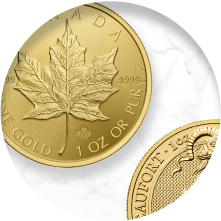

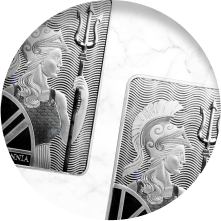
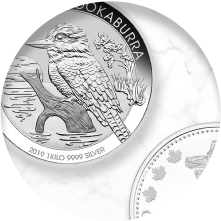
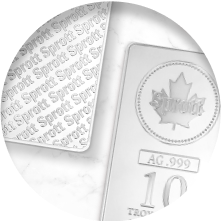

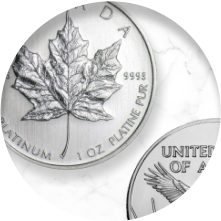

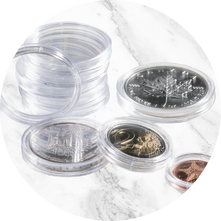
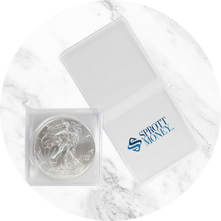
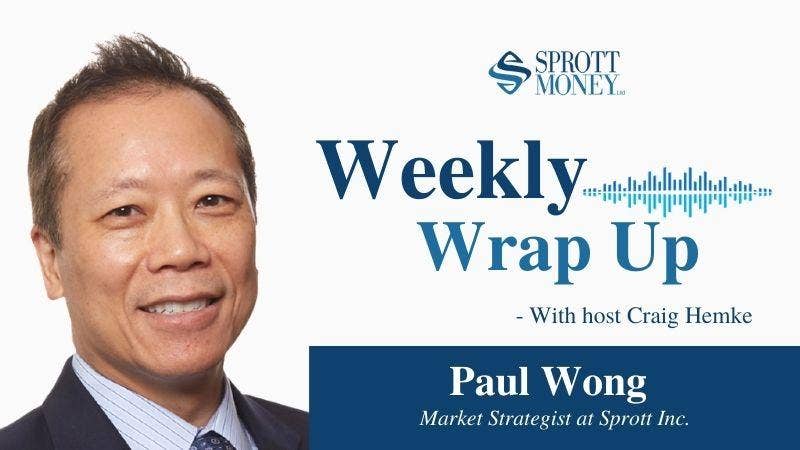



Looks like there are no comments yet.